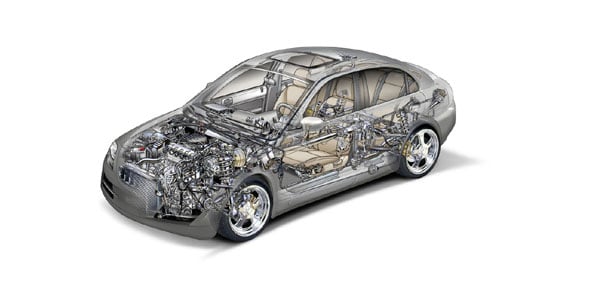A diesel engine completes one cycle of operation in six events. These events include intake, compression, combustion, expansion, exhaust, and scavenging. During the intake event, air is drawn into the engine. In the compression event, the air is compressed. Combustion occurs when fuel is injected and ignited, leading to the expansion event. The exhaust event involves the expulsion of waste gases. Finally, in the scavenging event, fresh air is introduced to clear out any remaining exhaust gases. Therefore, a diesel engine requires six events to complete one cycle of operation.
















